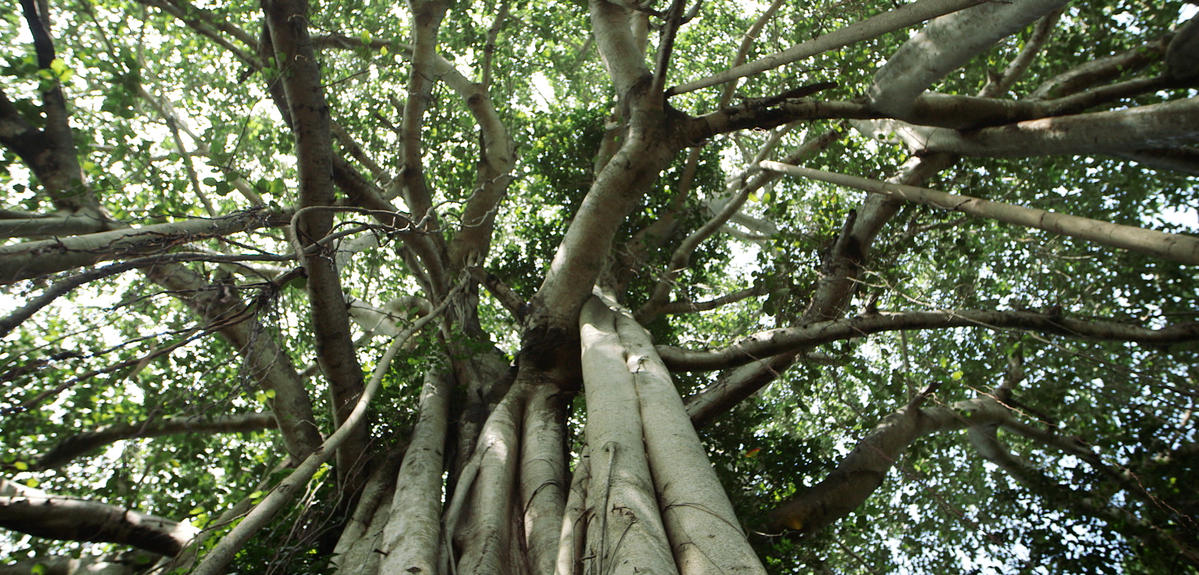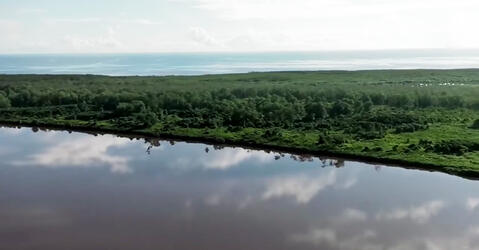You are here
India’s Nature Under Pressure
Though colonies of pelicans, storks, herons, and cormorants are thriving in southern India, their presence belies the menace hanging over their environment. Across Asia, 5,000 square km of wetlands disappear each year. 5% of India’s territory is covered in wetlands, that are home to a quarter of the country’s biodiversity. Like so many natural spaces in India, these lakes, swamps, and lagoons are under immeasurable pressure from the population’s booming development.
We’re on the Lake Oussoudou, in Tamil Nadu, a state on the southeastern point of India. This freshwater reservoir is central to the ongoing wetland studies of Raphael Mathevet, a naturalist at the French Institute in Pondichery.
This thriving environment welcomes both migrating and local species of animals that are accustomed to the presence of humans ; and for good reason : urban sprawl and the needs of agriculture have gradually encroached upon these biological hotspots that are desperately in need of conservation.
Raphael Mathevet - Naturalist
This environment is emblematic of the manmade pressures that we see across the planet: urbanization, large-scale landscaping and farming, heavy water usage, industrial pollution - basically a very threatening combination of factors. Nevertheless, in spite of all of the dangers that have accumulated over the last thirty years, this environment has maintained a rich biodiversity and we think the negative aspects are still reversible. The goal is to find a balance that allows us to protect this biodiversity while enabling further human development.
Tracking wetlands is only one branch of the research carried out by teams within the French Institute at Pondichery. These environmental pressures extend far beyond the wetlands, reaching under even the canopies of nearby forests.
Over the last few decades, this vast forest stood along the edges of human settlements. Ancient trees welcomed the prayers and offerings of local populations who considered the forested spaces as dedicated to worship. Little by little this devotion evolved into a religion, necessitating the construction of bigger and bigger temples, and resulting in more and more deforestation.
In the rare parcels spared by human activity, teams of botanists study the spatial distribution of species and regularly follow their growth. After selecting 10 square meters at the heart of this primal forest, researchers take census of the species present and analyze the shape of their leaves to determine the identity of each tree.
It’s a massive undertaking, one in which scientists want to involve the greater public. Thanks to a mobile application developed by the research team, users are able to fill out a questionnaire and identify the species they encounter. In this way, the growth of the platform is distributed among those gathering precious data on the trees covering the Indian sub-continent.
Ayyappan - Botanist
Across the globe the biodiversity is disappearing, forests are shrinking, we are facing another depletion of resources . We are also acknowledging that climate has been changed, so we don’t know what’s going to happen. Technically we need to document what is there at the moment and what kind of changes are going to happen on indigenous trees, species and the ecosystems so the resources can be kept for next generations.
These ventures into the forest are also opportunities to gather new samples, with which, the massive list of vegetation comprising Indian flora can be completed. Plants taken from this site will be added to the exceptional herbarium located at the French Institute at Pondichery. Among these shelves, over 5,000 species have been collected and spread over nearly 30,000 pages.
Ballashandran - Botanist
We are keep on adding some new species from wherever we go, new record to India, to the state, or the the region as well as we rediscovering some species after 100 or 150 years. In the field itself we used to write the character of the tree, mainly habit and habitat, field character like flower color, feature fragrance or not and fruit colors. Once it’s collected we use to keep a tag on it, that’s a reference number and for the identification it will be very useful.
If this herbarium stands witness to the recent history of the region’s vegetation, another collection enables scientists to look even farther back, to an era when humans were only just beginning to work the Earth. In these boxes, some 15,000 samples of fossilized pollen are preserved, ancient witnesses to the ecological history of the region. At the early stages of becoming seeds, this pollen possessed a hard shell which preserved it long enough to be fossilized.
In order to find these fossils, teams of palynologists regularly sift through layers of sediment belowground. The clays found in wetlands are ideal as their properties, like lower acidity, naturally preserve the pollen. The research team uses a core drill to dive below the surface and retrieve samples from the depths of the swamp. Back in the lab, the long process of filtering the pollen from the muck of the swamp is only just beginning. After numerous days of work, the ancient fossilized pollen, over 30,000 years old, are revealed under the microscope’s lens.
The researchers on these teams are focused primarily on the Holocene period, which began around 12,000 years ago. It was during this epoch that the climate and rhythm of monsoons in India changed, and human societies began to transform their surroundings. Certain wild and cultivated plants left traces here, even though it was not their environment of origin. These clues enable scientists to follow the impact of human society along the course of history and imagine the evolution of the Indian countryside in the years to come.
Prassad ITV
We know that the vegetation cover was higher few thousand years ago but it is not just the vegetation cover it was also the monsoon pattern in India. India is monsoon impacted, so monsoon have fluctuated on the last thousand of years and all this signatures are based on pollens grains and mainly based on plants that we find on this sediments samples. I feel that the impact of human beings in modifying the landscapes, for example in south India we have a very big issue with urbanisation and many of the real forest parcels gives way to townships and building up roads, this has a bigger impact than climate change as such.
Scientists from across disciplines continue to paint a rich picture of a biodiverse landscape. Their research could provide for its protection against relentless human development, and create a balance between humans and nature in a new kind of ecosystem.
India: Nature Under Pressure
Can human development continue at this pace without causing a loss of biodiversity? A group of researchers at the French Institute of Pondicherry believes so. By studying the impact of human activities on a biological hotspot in the South of India, they hope to find the key to a harmonious coexistence between humans and wildlife.
Ayyappan NARAYANAN
Balachandran NATESAN
Prasad SRINIVASAN
Department of Ecology at the French Institute of Pondicherry
UMIFRE 21 CNRS / Ministry of Foreign Affairs)





